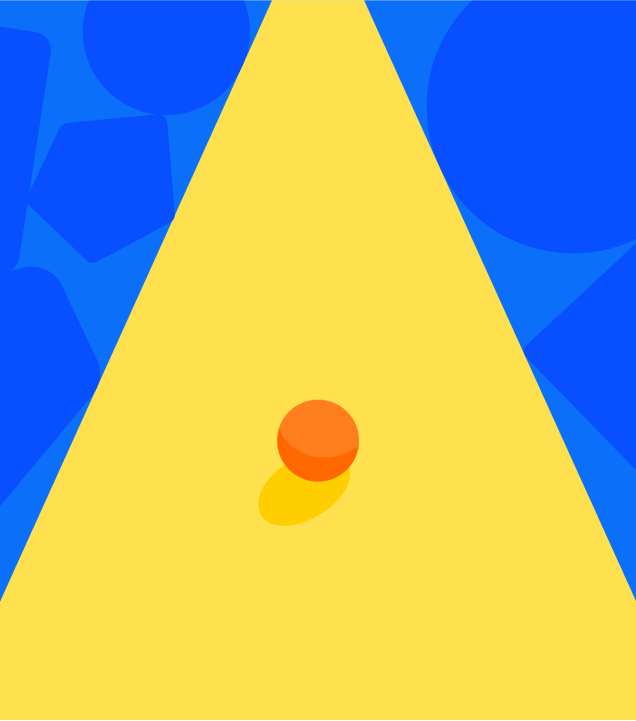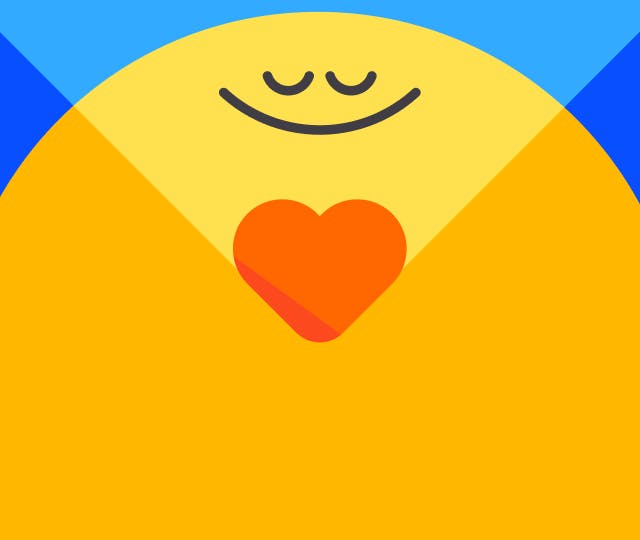How to get out of a rut
By Your Headspace Mindfulness & Meditation Experts
May 30, 2024
Ruts are real, and we can at least partially blame our brain’s habitual electrical patterns. In fact, our brain has its own region dedicated to seeking patterns and applying old rules to our experiences. But sometimes, that tendency to pattern-seek may tangle us up in a rut — and leave us feeling withdrawn, uninspired, unmotivated, or struggling to see or do things differently. It’s important to remember that we do have the power and agency to shake things up, and we cannot forget that. So, what is a rut, exactly? How do we get stuck in one? And what can we do to muster the courage to pull ourselves out?
What is a rut?
In the animal kingdom, the word rut actually refers to the annual mating season — who knew! A rut is also defined as a deep groove in soft ground, often made by a wheel. But we aren't here to talk about horny deer or soft soil, we’re here to discuss the kind of psychological rut we humans tend to fall into over time.
It’s no surprise that the origin of the expression “stuck in a rut” goes way back to the 19th century and gets its literal meaning from that aforementioned wheel stuck in a deep groove of soft ground. The expression today is more metaphorical. A rut is a state of feeling trapped or stuck in a predictable behavior/pattern or a mundane routine. Chief Business Officer at Careernet, Neelabh Shukla, defines a career rut as “a feeling similar to experiencing a prolonged state of monotony and reduced productivity.”
In a recent Virgin Media 02 News study, 59% of British people polled recognized that they were in a need of a change in their lives. And 61% admitted they are “stuck in a rut.” And it’s no secret that this sentiment is felt across the Western world, too.
A rut might look like working at the same job for a decade despite feeling unfulfilled and unchallenged; or maybe you're in a relationship that has remained stagnant for years and you're ready for change/ Perhaps it’s something small — like noticing you’ve eaten the same three things for dinner for the last three weeks. Whatever it may be, ruts are real and affect a surprisingly large number of the population. But how do we fall into ruts in the first place?

How exactly do we end up in a rut?
We get stuck in ruts because of the tangible decisions we make — for example, staying in the same city all our lives — and because of our brain’s habitual electrical patterns. Our past experiences shape our present and future ones by applying old rules to match our current situation. All this habitual wiring takes place in the dorsolateral prefrontal cortex (DLPFC) — the brain's "pattern seeker".
You’ve probably heard the expression, “you can’t teach an old dog new tricks.” Well, this old saying is a perfect example of the brain’s habitual “pattern seeker” at work. The expression suggests that it’s nearly impossible to get people to try a new way of doing something if they’ve been doing it one way for a long, long time. For example, if you’ve taken the same boring route to work each morning, you may find it difficult to notice the blooming magnolia tree in front of your parking garage, or even comprehend taking a different route in the first place. A byproduct of an overly-wired habitual brain following the same mundane routine is the feeling of being stuck in place, which can lead to anxiety and depression.
In a study in the Journal of Cognitive Psychotherapy about how brains react to music, it was found that the brains of healthy patients reacted favorably to the sound of their favorite music, while depressed — stuck in a rut — patients brains’ didn't even notice the music was playing at all. Even your favorite music can become background noise when you fall into a rut.
According to Psychology Today, there are 10 possible signs to look out for to determine if you’re stuck in a rut. Some signs include: not having anything to look forward to, fantasizing about getting away from your life (beyond just a vacation), checking boxes off your ‘to-do’ list but never feeling accomplished, feeling like all your days are blurring together into one long day, and knowing you want to make a change but deciding that it’s more comfortable to stay put where you are. If you see yourself in any of the above signs, it might be time for something new.
Neuroplasticity and ruts
In a Cleveland Clinic podcast called Neuroplasticity: Building Brain Power with Grace Tworek, PsyD, Dr. Tworek defines neuroplasticity as “the capacity that our brain has to adapt and to respond to new or novel experiences… neuroplasticity speaks to the flexibility and adaptability of our brain throughout our life.” And when it comes to whether or not neuroplasticity affects ruts, Dr. Tworek believes it does: “neuroplasticity comes from those new experiences...So many things for children are novel, are new. We've never experienced first grade. We've never experienced these things before.” So, if you do feel like you're in a rut, Dr. Tworek suggests trying something a little bit new. “If we stick to our ways, stick to our routine,” says Dr. Tworek, “we might not be taking full advantage of neuroplasticity as we could be if we threw something a little new into the mix every once in a while.”
"Climbing out of a rut is all about choices, choices, choices."

How can I get myself unstuck?
“When we are stuck in a rut we are being invited to grow and expand,” writes Dana Arcuri in her book Reinventing You: Simple Steps to Transform Your Body, Mind, & Spirit. Climbing out of a rut is all about choices, choices, choices. As soon as you acknowledge that you’re in a rut, decide to do things differently, and proactively make a change, you’ll begin to rewire your habitual dorsolateral prefrontal cortex and create new patterns.
Remember: you have agency! But exercising our agency takes practice. It’s okay to start small and make one different choice at a time. Call someone you love that you haven’t talked to in a while, visit that new coffee shop you've been wanting to check out, make something new for dinner, take a different route to work, start meditating again, or try a new exercise class. If you need a little help, rope in a friend. See how one small change can shift your perspective and remind you that you have the power to make a change — big or small.
Meditations to get you out of that rut
Try a meditation with a journaling prompt about getting to know what our discomfort is trying to protect us from. Grab a pen and paper to write, or just take a moment to reflect. Headspace also offers online therapy, helping you connect with licensed therapists for anxiety, depression, and more.


Be kind to your mind
- Access the full library of 500+ meditations on everything from stress, to resilience, to compassion
- Put your mind to bed with sleep sounds, music, and wind-down exercises
- Make mindfulness a part of your daily routine with tension-releasing workouts, relaxing yoga, Focus music playlists, and more


Stay in the loop
Be the first to get updates on our latest content, special offers, and new features.
By signing up, you’re agreeing to receive marketing emails from Headspace. You can unsubscribe at any time. For more details, check out our Privacy Policy.
- © 2025 Headspace Inc.
- Terms & conditions
- Privacy policy
- Consumer Health Data
- Your privacy choices
- CA Privacy Notice







